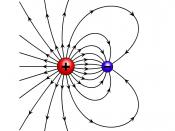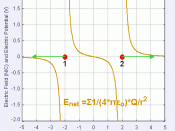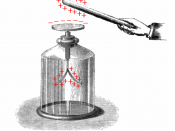In this section we are dealing with two types of charges: protons and electrons. Protons are bound tightly in the center of an atom, but electrons can sometimes leave their atoms. The two types of charges interact in specific ways. Charges that are the same repels each other while charges that are different attracts each other. The reason is because they have different types of charge. A positive charge is shown with a (+) sigh as the negative charge is shown with a (-) sign. Just as magnetic poles exert their forces over a distance, so do electric charges. An electric charge exerts a force through the electric field that surrounds the charge. When a charged particle is placed in the electric field of another charged particle, it is either pushed or pulled. It is pulled towards the other charge if the two charges are not the same. When there are two or more charges, the resulting electric field is altered.
In this section we are also dealing with static electricity. We learn about friction, conduction, induction, conservation of charge, static discharge, and electroscope. A neutral object can become charged by gaining or losing electrons. If an object loses electrons, it is left with more protons than electrons. Static electricity is the build up of charges on an object. In static electricity, charges build up, but they do not flow. Friction is the transfer of electrons from one object to another by rubbing. Conduction is the transfer of electron from a charged object to another object by direct contact. Induction is the movement from electrons to one part of an object caused by the electric field of another object. If an object gives up electrons, another object gains those electrons. Electrons are only transferred from one object to another...


